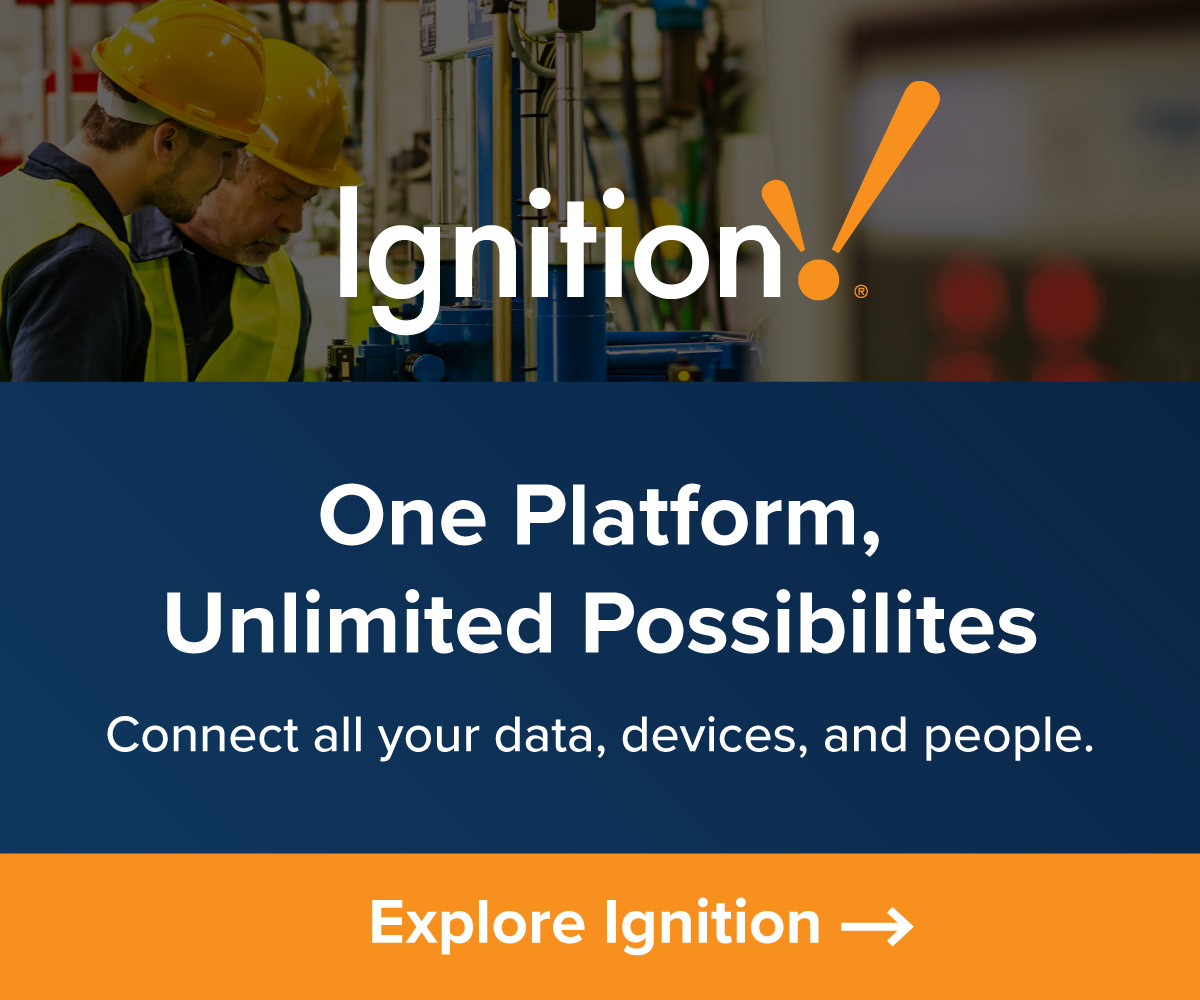by Gary Mintchell | Sep 4, 2025 | Commentary, Generative AI, News
I am on vacation, yet devoting hours to my avocation–assigning soccer referees to high school games. When disputes happen, I’m always in the middle. I’ve devoted several hours to that this week. Meanwhile, I still check the news.
I have two favorite news sources. One is called Axios; the other Morning Brew. But neither is infallible.
Today’s Morning Brew newsletter included this incendiary headline, Companies Are Benefitting from AI-drive Layoffs.
That is simply not true. Companies are laying off because they overhired during Covid and post-Covid times. Now they need to cut back. The CEOs, clueless though they may be, have called on managers to increase use of AI to do the work of the terminated employees. Studies show that this simply doesn’t happen. Like almost all automation technology, the reality of implementation is harder than marketing and trade journals make it sound.
by Gary Mintchell | Sep 2, 2025 | Commentary, Generative AI, News
How are you searching on the Web these days?
I still use Ecosia that realistically uses Google. Some, any way. You get many ads, a few links. Over time, though, the value of the links has continued to dwindle. When I want a deep search with follow up and deeper probe, I use Claude.ai.
But Claude does not show ads or links to sources (you can ask, but I usually don’t.)
Wonder what the ramifications are? Me, too. Then this article crossed my rss feed from Crazy, Stupid Tech.
Cloudflare’s CEO wants to save the web from AI’s oligarchs. Here’s why his plan isn’t crazy.
Written by Fred Vogelstein
Vogelstein writes:
Sixteen years ago Matthew Prince and classmate Michelle Zatlyn at Harvard Business School decided there was a better way to help companies handle hacker attacks to their websites. Prince and a friend had already built an open source system to help anyone with a website more easily track spammers. What if the three of them could leverage that into a company that not only tracked all internet threats but stopped them too?
Within months they had a business plan, won a prestigious Harvard Business School competition with it, and had seed funding. They unveiled the company, Cloudflare, a year later at the 2010 Techcrunch Disrupt completion, taking second place. And today, riding the explosion of cloud computing and armed with better technology and marketing, they’ve leapfrogged competitors to become one of the dominant cybersecurity/content delivery networks in the world.
I was immediately interested because I pay Cloudflare to protect my website. So far, it has been an excellent purchase.
Prince wants to talk about the future of the web and journalism with me because he thinks the AI chatbot revolution is killing both of them. And he thinks he can help fix that with something he calls pay-per-crawl, a gambit he and Cloudflare launched on July 1. He cares, he says, because “I love the smell of printer ink and a big wet press. So I kind of have a soft spot for the media industry and how important it is.” This isn’t spin. Two years ago he and his wife bought the Park City Record, his hometown local paper..
It’s a big enough problem that Prince and most publishers now believe a lot of journalism and anything else advertising supported online will die or be subsumed into AI companies in the next few years without intervention. And because 20 percent of websites use Cloudflare for security and traffic management, he can block enough AI chatbots crawlers – with his customers’ permission, of course – to at least force some big AI companies to the negotiating table.
I worked as an editor in trade magazine publishing for about 15 years. By the time I left in 2013, I could see the handwriting on the wall. During my entrepreneurial life, I’ve seen booms and busts. I can usually smell a bust coming. The advertising model of trade journals looked shaky. And digital funds are in short supply. In my 12 years as a blogger meeting many other former magazine writers also out on their own, I’ve met expenses with a little left over. But every year gets tougher.
The problem Prince is trying to solve is perhaps the biggest attack on how the web functions since Tim Berners-Lee created it in 1990. Until the AI revolution took hold two and a half years ago, the economic foundation worked like this: Search engines like Google and Microsoft freely and regularly indexed every site with web crawlers. In return, the search results powered by those indices generated referral traffic to those crawled websites. That has supported hundreds of billions of dollars in ad spending and search engine optimization.
But AI chatbots don’t work that way. Instead of ten blue links to choose from after a search – with advertising displayed at the top and right of results – AI chatbots just supply you with the answer. It’s a much better experience for users. Twenty years ago Google’s founders themselves in interviews with me and elsewhere talked about Google search only being an intermediate step toward creating an answer engine like this.
The problem this creates, however, is that there are no ads when AI chatbots give you the answer. If there are links to sources, users almost never click on them. AI chatbots also drive up publishers’ bandwidth costs because they crawl thousands of times a day. Wikipedia said back in April that these bots had raised their bandwidth costs 50 percent.
To larger entities than mine, this is a double hit. I hope Cloudflare can ignite a movement to bring some sort of sense to this market.
I highly recommend reading the entire interview.
by Gary Mintchell | Aug 27, 2025 | Business, Generative AI, News
Voice AI news comes to me only through Deepgram, although my tech podcasters update all the consumer news and failings of Alexa, Siri, and other Voice AI consumer applications. Deepgram actually provides a platform for developers to add the technology into their products.
Two pieces of news of interest. Deepgram has signed a strategic collaboration agreement (SCA) with Amazon Web Services (AWS). The multi-year agreement deepens Deepgram’s relationship with AWS and reflects a shared commitment to accelerating the development and adoption of generative voice AI. And second, Deepgram’s voice AI models are now available on Cloudflare Workers AI, making it easier than ever for developers to build real-time, expressive voice applications at scale.
As part of the AWS collaboration, Deepgram will expand co-selling and go-to-market efforts, integrate more deeply with AWS services, and empower enterprises to build scalable, high-accuracy voice applications across a wide range of use cases.
Deepgram’s infrastructure is deeply integrated with AWS, enabling customers to deploy its platform on Amazon EKS for scalable container orchestration, store data securely with Amazon S3, and manage containers using Amazon ECR. Customers can also use Amazon API Gateway and AWS Lambda to securely orchestrate interactions between Deepgram’s voice AI APIs and other services, including Amazon Bedrock hosted models and enterprise systems. Whether deployed in a customer-owned VPC or as a fully managed SaaS environment, Deepgram offers the flexibility required to maintain compliance, ensure data control, and operate efficiently at scale. Looking ahead, Deepgram plans to expand availability through AWS services like Amazon SageMaker and Amazon Bedrock to further streamline AI model deployment and orchestration.
Deepgram’s speech-to-text API can also be integrated into Amazon Connect, enabling best-in-class STT speed and accuracy for real-time transcription and voice automation within contact center environments. This helps enterprises improve agent productivity, automate call summaries, and enhance customer experiences.
Regarding Cloudflare announcement, Adam Sypniewski, CTO, Deepgram, said, “By hosting our voice models on Cloudflare’s Workers AI, we’re enabling developers to create real-time, expressive voice agents with ultra-low latency. Cloudflare’s global network brings AI compute closer to users everywhere, so customers can now deliver lightning-fast conversational AI experiences without worrying about complex infrastructure.”
by Gary Mintchell | Aug 25, 2025 | Generative AI
AI and AI Agents continue to lead the industrial technology news. This even though AI has been embedded within industrial technology for decades. Recently agents have been a hot topic. While on the one hand, I’m sure this technology will be beneficial, I’m less than optimistic about all the AI hype I’ve been hearing. I’m working on a longer piece to follow up on my other AI thoughts.
This product is the Undo button for AI Agents. Most of us could use an Undo button for emails. That makes this doubly interesting.
Rubrik Inc. announced the launch of Agent Rewind, following the close of Rubrik’s acquisition of Predibase. Agent Rewind, powered by Predibase AI infrastructure, will enable organizations to undo mistakes made by agentic AI by providing visibility into agents’ actions and enabling enterprises to rewind those changes to applications and data.
“As AI agents gain autonomy and optimize for outcomes, unintended errors can lead to business downtime,” said Anneka Gupta, Chief Product Officer at Rubrik. “Agent Rewind integrates Predibase’s advanced AI infrastructure with Rubrik’s recovery capabilities to enable enterprises to embrace agentic AI confidently. Today’s organizations will now have a clear process to trace, audit, and safely rewind undesired AI actions.”
A recent study found that AI agents are frequently becoming disoriented, choosing incorrect shortcuts, and struggling to complete even simple multi-step tasks, revealing critical flaws that undermine their reliability and effectiveness.
Agent Rewind makes previously opaque AI actions visible, auditable, and reversible, creating an audit trail and immutable snapshots that facilitate safe rollback. Current observability tools only show what happened, but not why or how to reverse high-risk actions.
When AI goes awry, Agent Rewind offers:
- Context-Enriched Visibility: Surfaces agent behavior, tool use, and impact while contextualizing each action, mapping it back to its root cause – from prompts to plans to tools – to enable precise recovery when something goes wrong.
- Safe Rollback: Uses Rubrik Security Cloud to rewind what changed, whether that’s files, databases, configurations, or repositories.
- Broad Compatibility: Will integrate seamlessly with a wide range of platforms, APIs, and agent builders, including Agentforce, Microsoft Copilot Studio, and Amazon Bedrock Agents, and will be compatible with any custom AI agent.
by Gary Mintchell | Aug 6, 2025 | Generative AI, News, Software
Tired of the hype and speculation surrounding the term Artificial General Intelligence? How about something that could be a useful tool for engineers? This release breeds questions as well as answers. How do you think you could use it?
- Foundation EGI platform: Demonstrating AI- & physics-driven disassembly of Engineering files
- With AI purpose-built for engineering, Foundation EGI is empowering teams to design faster, solve harder problems, and rethink what’s possible.
Foundation EGI, creator of the world’s first Engineering General Intelligence (EGI) platform, announced $23M in oversubscribed Series A funding, raising over $30M total. The company is accelerating its vision of turning manufacturing’s biggest bottlenecks into breakthroughs using domain-specific AI.
The latest round was led by Translink Capital with participation from RRE Ventures, McRock Capital, Escape Investment Management (Jim Scapa), Fifth Growth Fund, and returning backers including E14 Fund, UNION, GRIDS Capital, and Henry Ford III.
“We’re not just using AI to automate tasks. We’re building AI that knows when to break the rules,” said Wojciech Matusik, Ph.D., Co-founder & CSO of Foundation EGI and Professor of EECS and MechE at MIT. “The biggest leaps in engineering haven’t come from following best practices. They came from challenging assumptions. Foundation EGI is designed to do exactly that.”
EGI combines purpose-built large language models with physics-based context and engineering best practices to tackle the complex nature of engineering, from design to manufacturing to documentation. It transforms disorganized specifications, siloed tribal knowledge, and outdated instructions into succinct, structured, auditable, and human-/machine-executable workflows.
“The next industrial revolution will be AI-native,” said Mok Oh, Ph.D., Co-founder and CEO of Foundation EGI. “It begins by empowering engineers with AI tools that speak their language. From there, we move toward a future where humans and machines co-design with shared context and creativity.”
Foundation EGI was born from MIT’s cross-disciplinary research in AI for design and manufacturing, led by co-founders Matusik and Michael Foshey. Their seminal paper, Large Language Models for Design and Manufacturing, was published in 2024 and has influenced a new wave of intelligent engineering tools. Foundation EGI was founded to commercialize and power real-world AI applications for all manufacturing domains, including automotive, heavy industry, appliances, power tools, advanced manufacturing, and much more.
“We are thrilled to invest in Foundation EGI to support their next phase of growth,” said Toshi Otani, Co-Founder and Managing Director of Translink Capital, who led the Series A. “We backed Foundation EGI because this is one of the rare teams that combines deep technical mastery in AI with firsthand knowledge of how design and manufacturing actually work. In addition, we believe that there is a great market opportunity that exists in Japan, Korea and Taiwan where we have a strong track record of supporting our portfolio companies.”
“The best founders don’t just see around corners. They reshape the cornerstones of entire industries,” said Vic Singh, General Partner at RRE Ventures. “When we met Mok, Wojciech and Mike we were immediately impressed with their market depth and technical acumen. Foundation EGI is building core infrastructure for the next generation of industrial AI — transforming manual processes that traditionally cost millions of dollars and countless hours of skilled labor into Engineering Intelligence — upending the space while giving engineers leverage to focus on the higher order work.
by Gary Mintchell | Aug 1, 2025 | Business, Generative AI
No marketing person exists today who can write a news release without a mention of AI. I keep expecting an AI-enabled terminal block. “Now, your electrician will never put the wrong wire in our terminal block thanks to AI…”
No CEO can announce corporate strategy without somehow incorporating AI—or their particular branding of AI—into the memo/speech/announcement.
Take Mark Zuckerberg, please. Faced with yet another existential crisis for his “we capture your attention for cash” machine, he proclaims “personal superintelligence”. Unfortunately, Zuck did not invent that term. As Om Malik points out in Meta’s Favorite Product Isn’t AI, It’s the Copy Button, he lifted the term and his memo from another source. Not unusual for the guy who lifted the idea for Facebook from his employers at the time at Harvard.
I went to two of my long-time favorite writers about Silicon Valley, Om Malik and MG Siegler for insight into the latest corporate AI salvo. As usual, there is more smoke and mirrors than real products.
As Malik writes:
Facebook’s real innovation has been in perfecting and scaling existing concepts rather than creating entirely new behaviors. Their strategy appears to be: watch others innovate, then copy and execute better with their massive user base and resources. Out in Silicon Valley, we call this “Zucking.” As I pointed out yesterday, the biggest challenge for Meta is not that it doesn’t have the resources or the mettle. It is just that it still doesn’t know what to copy. Scale.AI might help, but the reality is that no one, including OpenAI and Anthropic, knows the how and why of AI and human behaviors around it. Chatbots are a start.
Zuck has moved quickly to stamp out, copy, or acquire competitive threats:
Zuck has competitive anxiety. By repeatedly talking about being “distinct from others in the industry” he is tipping his hand. He is worried that Meta is being seen as a follower rather than leader. Young people are flocking to ChatGPT. Programmers are flocking to Claude Code.
Malik concludes:
Most CEOs defend their existing moats. Zuckerberg systematically abandons them. He understands that Facebook’s real asset isn’t the blue app. Instead, it is the graph of human attention and relationships. Each pivot is about preserving that graph while migrating it to new interfaces.
And over almost two decades of following the company, I have come to a conclusion that Zuck is one of the best “chief executives” to come out of Silicon Valley. And this is coming from someone who has no qualms about viewing him with moral disdain. In the past, I have referred to the company as “amoral” for a reason. Not only is Zuckerberg paranoid and Machiavellian, he is also willing to go to any extreme to survive and thrive.
MG Siegler writes:
At the same time, while you’re throwing tens of millions, and sometimes hundreds of millions – and perhaps even billions – at people to try to join your new Superintelligence Labs, a number of folks are turning you down. You’re making them an offer they cannot refuse and… they’re refusing it. Why? In part, perhaps, because your messaging around AI is muddled at best. Further, many simply aren’t inspired about the prospects of going to work for what is still very much an advertising-driven company trying to build the future of AI. So what do you do if you’re Zuck? Try to change the conversation.
When you read reports of CEOs who have read a news item in Forbes or the Wall Street Journal and proclaim they’ll save all labor costs by using AI, understand that they really don’t have a clue. Part of the comments are directed at investors. Part to scare employees. Part to sound like they know the latest technology.




